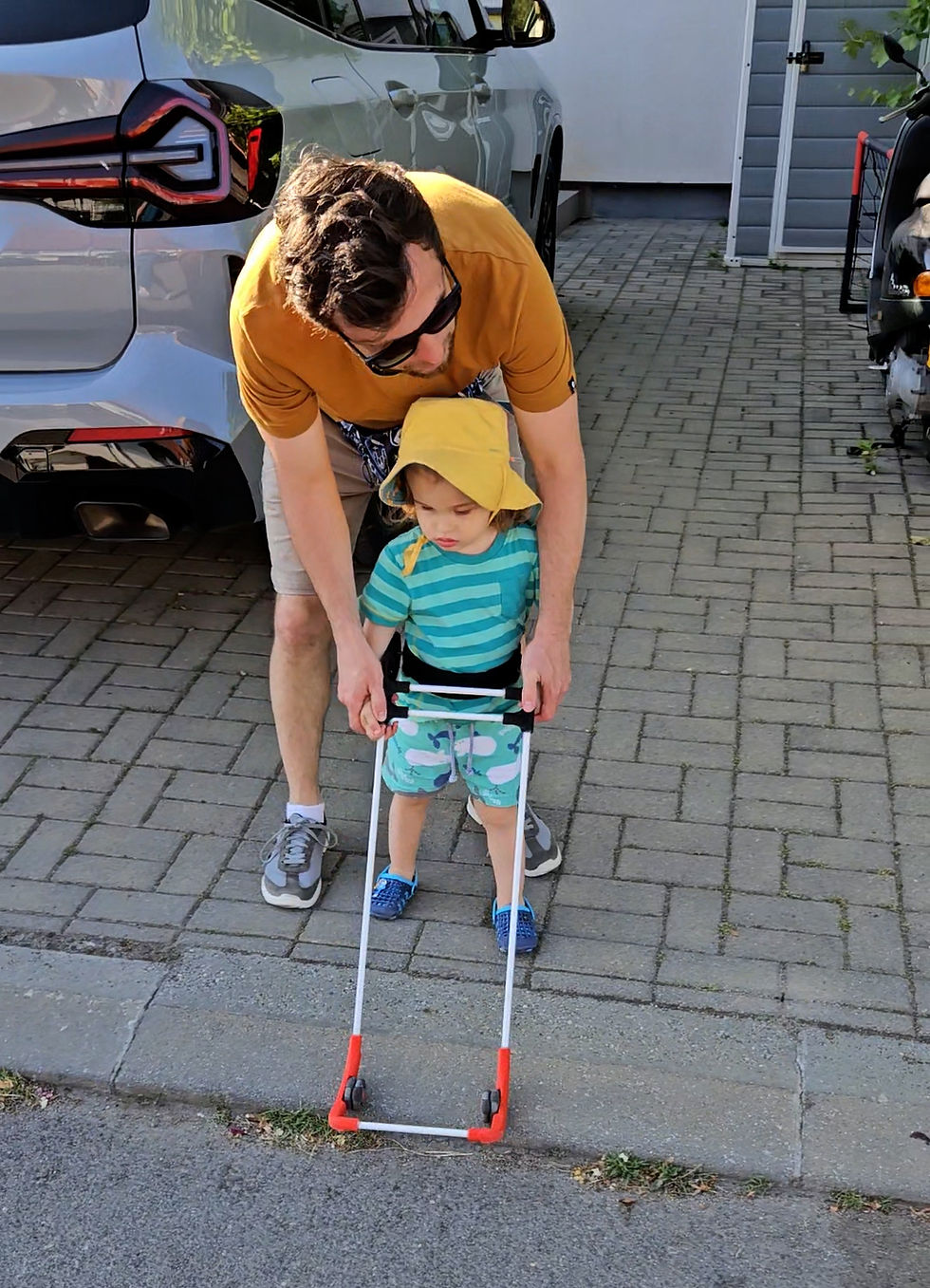Let the whole child participate
- Grace Ambrose-Zaken

- Nov 6, 2019
- 2 min read
Updated: Jun 16, 2024
By two years of age, the gross motor milestone, runs avoiding obstacles is essential to participating in games with other children. The fact that children who are blind can be physically able to run, but cannot see to avoid obstacles does not have to be the end of their fast paced games.
When children born severely visually impaired or blind wear their canes most of the day, every day, they are able to achieve the gross motor milestones that rely on learning how to interact with obstacles blocking the path. Can children who are mobility visually impaired or blind (MVI/B) play on the same field, court, rink as sighted children with their mobility tools?

Yes, but not without everyone accepting their mobility tools as essential to the fun. Take wheelchair basketball, the equalizer is that everybody uses a wheelchair. Therefore, if able-bodied players want to play, they must borrow a wheelchair.
At onetime the thought of wheelchairs in sport was not considered feasible, now wheelchair sports are ubiquitous. Unfortunately, the same consideration does not seem to be provided to the blind sportsperson. In blind soccer, the sighted players are asked to wear blindfolds, and yet nobody is provided with a rectangular cane or long cane. All of the players are asked to play using only 18-month old gross motor skills and this results in all players risking injury from sudden, unavoidable collisions.
The question should not be whether to include their mobility tools in games and sports played by people with MVI/B, but how to integrate the whole person into sport. When children are MVI/B, their long canes, rectangular canes and wearable canes complete them, by providing tactile path information. Their visual impairment robs them of essential path information, their mobility tools gives it back.
Nobody would think, take the wheelchair away from the paralyzed person before starting the game of basketball, because that would rob them of their ability to move with speed and grace. The same is true for people who are MVI/B, taking away their mobility tool, robs them of their safety, speed and grace.
Children who are five and younger and are MVI/B need to wear their canes all day, every day and this includes during games and sports. The sports and games can be adapted to fit the child’s needs, not the other way around.
Let’s be creative and find ways to include the mobility tool into sport, not ask children who are MVI/B to give up their tools of independence in order to play with others.








Comments